
Catalog Advanced Search
-
Contains 8 Component(s) Includes Multiple Live Events. The next is on 01/10/2026 at 8:00 AM (EST)
The NVFC will offer Incident Safety Officer Training, Leadership for the Fire and Emergency Services, and Surviving the Job - Cancer in the Fire Service in Ludington, MI on January 10, 2026.
Offerings
Incident Safety Officer Training Series (2 hours)
The NVFC’s Incident Safety Officer (ISO) training will give students an overview of the role of an ISO and cover communications and safety, as well as the practical application of this information. Please note, this is not an ISO certification program.
Leadership for the Fire and Emergency Services (2 hours)
Quality leadership is essential for the fire and emergency services to accomplish the mission, improve member satisfaction, and best serve the community. This course examines leadership styles, qualities, ethics, and best practices to help your department function at a high level and avoid fire and emergency services leadership pitfalls. Retention research will also be discussed to help leaders understand retention concerns and identify solutions.
Surviving the Job - Cancer in the Fire Service (2 hours)
Cancer is a serious threat facing today’s fire service, but there are easy and low-cost ways you can lower your risks. These include the 11 best practices for firefighter cancer prevention as outlined in the Lavender Ribbon Report. This course will explain how to incorporate these life-saving practices into your daily routines to reduce your exposure risks and protect yourself and your fellow firefighters from occupational cancer.
Date and Time
January 10, 2026 - 0800-1600 ET
Location
Ludington Fire Department
918 East Tinkham Ave.
Ludington, MI 49431
Travel and Logistics
Muskegon County Airport (MKG) or Gerald. R. Ford International Airport (GRR)
Recommended Hotels:
- Holiday Inn Express & Suites Ludington by IHG, 4079 US-10, Ludington, MI 49431
- Best Western Lakewinds, 5005 US-10, Ludington, MI 49431
Training site parking: Free lot
Meals and refreshments: Attendees are responsible for their own lunch, beverages, and snacks.
Attire: casual (no gear needed)
Contacts
Local: Brandon Coughlan,firedept@ci.ludington.mi.us, (231) 233-5585
NVFC: Amanda Tegtmeyer, amanda@nvfc.org, (202) 887-5700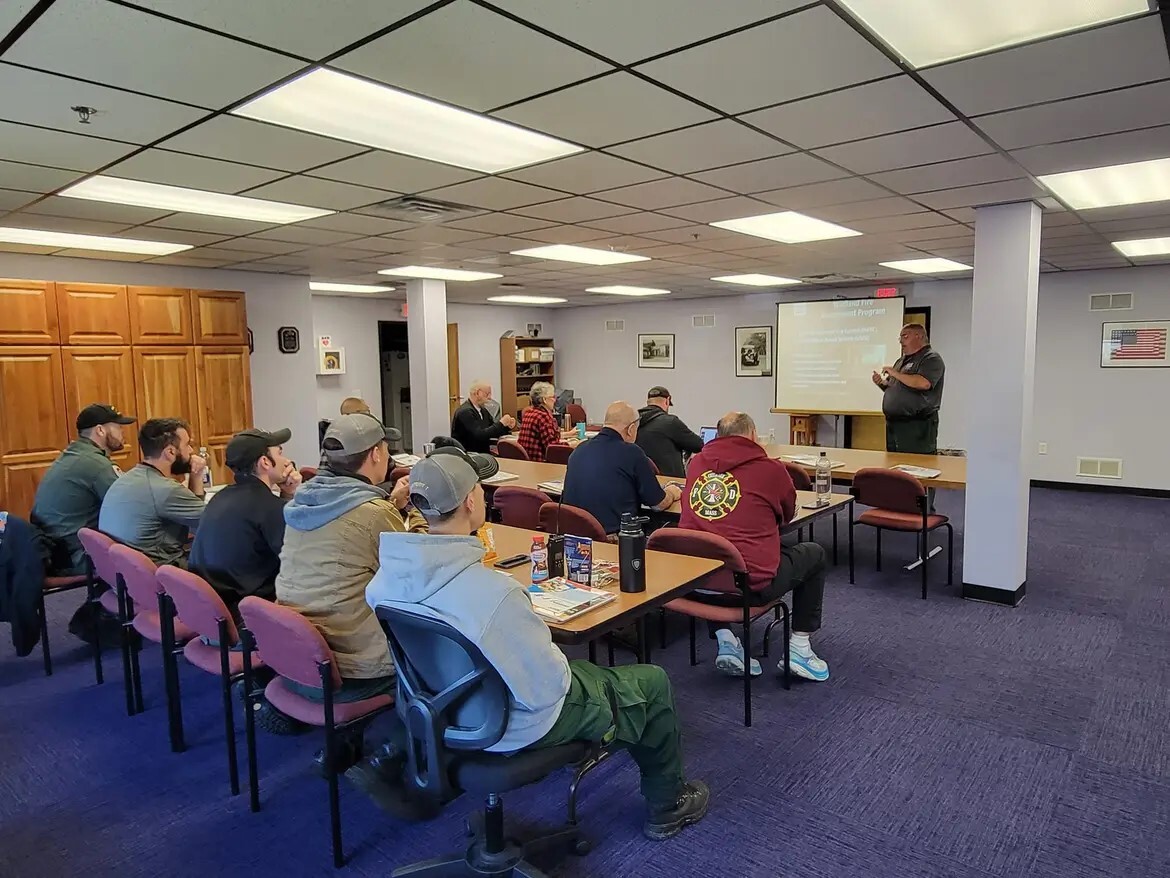
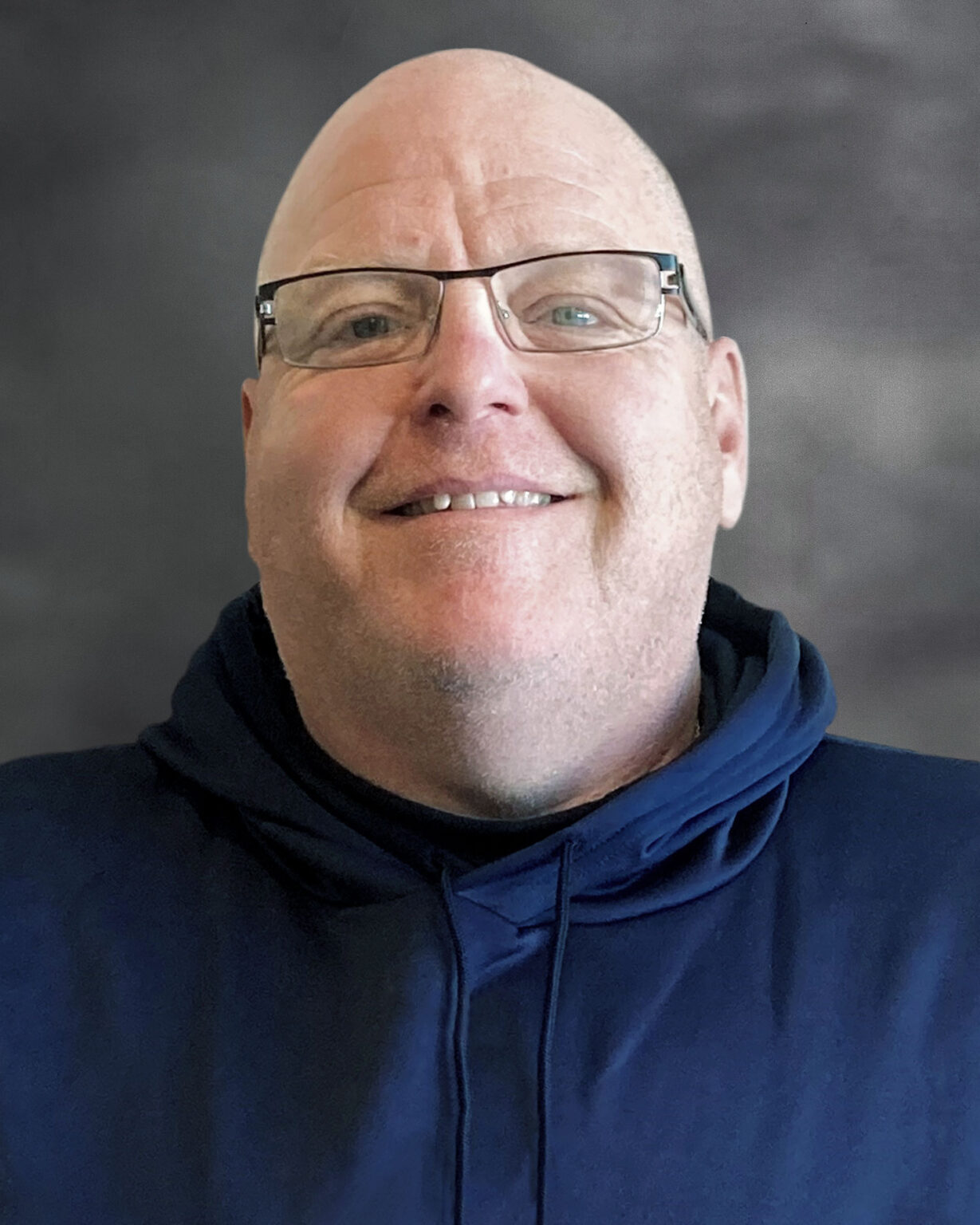
Brian Focht
Brian Focht CFPS, CFEI, is a 40-vetern of the fire service and Past Chief of the Willow Grove (Fire Company and a Career Lieutenant with the Horsham Fire Company serving as shift supervisor and Training Officer. He is a Pro Board level 3 fire instructor and teaches at several academies. He is a PA Department of Health Paramedic and Instructor. He has authored articles on Natural Gas and Electrical Emergencies and Designed a Training Video and Program for Emergency Services on dealing with Autism. He co-authored a book on Tactical Response to Natural Gas Emergencies by PennWell. He was the 2014 OCAILA Community Achievement Award, 2016 Recipient of the Garry Breese IAFC Safety Performance Award, 2017 Liberty Museum Valor Award for Community Betterment and 2019 PA Department of Health Instructor of the Year. A NFPA Certified Fire Protection Specialist and many other professional credentials and meritorious citations.
-
Register
- Non-member - Free!
- Member - Free!
- More Information
-
Register
-
Contains 7 Component(s) Includes Multiple Live Events. The next is on 10/18/2025 at 9:00 AM (EDT)
The NVFC will offer its Essentials of Volunteer Retention and Recruitment course and Volunteer Fire Service Culture: Essential Strategies for Success course at the Bangor Community Fire Department.
Free Essentials of Volunteer Retention and Recruitment course - no experience needed!
Many fire and EMS departments across the nation are struggling to find new volunteer members and retain their current members. This session discusses the challenges of recruiting volunteers, presents valuable research collected as part of the NVFC’s Make Me A Firefighter campaign, and offers ideas to help overcome recruiting challenges. Potential retention solutions and the importance of leadership will also be covered.
Free Volunteer Fire Service Culture: Essential Strategies for Success - no experience needed!
The NVFC published the textbook Volunteer Fire Service Culture – Essential Strategies for Success as a guide to fire service leaders who desire to change their department’s culture and attitude towards personal health and safety. This training delves into key points from the guide to reinforce the need for change and provide a roadmap to improve the health and safety of volunteer fire and EMS responders.
Date and Time
Saturday, October 18, 2025, 0900-1600 EST
Location
Bangor Community Fire Department
417 W. Arlington St.
Bangor, MI 49013
Course Offerings
Essentials of Volunteer Retention and Recruitment - 0900-1100
Volunteer Fire Service Culture: Essential Strategies for Success - 1200-1600
Travel and Logistics
Closest airport: Gerald R. Ford International Airport (GRR) or South Bend International Airport (SBN)
Recommended Hotels:
- Holiday Inn Express: South Haven, 72095 Co Rd 388, South Haven, MI 49090
- Comfort Suites, 1755 Phoenix St, South Haven, MI 49090
Training site parking: Free lot
Attire: casual (no gear needed)
Lunch: On your own
Contacts
Local: Derek Babcock, bangorfire@comcast.net, 269-214-0213
NVFC: Amanda Tegtmeyer, amanda@nvfc.org, 202-887-5700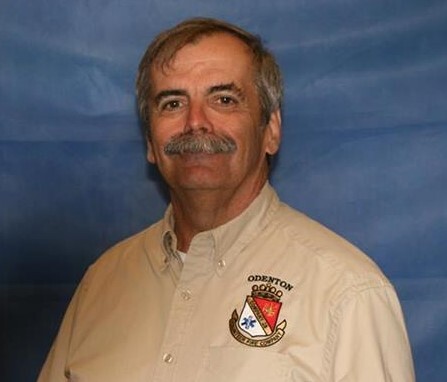
Dave Lewis
David Lewis is an active member of the Odenton Volunteer Fire Company (Anne Arundel County, Maryland), having served for over 50 years as a volunteer firefighter/EMT, Past President, and past Chief Officer. David is a Past President of the Anne Arundel County Volunteer Firefighters Association and of the Maryland State Firemen’s Association. He currently serves as the President the Cumberland Valley Volunteer Firefighters Association and as Maryland Director to the National Volunteer Fire Council. David’s true passion is in training and education. He is active as an instructor with the Maryland Fire and Rescue Institute and the National Fire Academy. He is also active with delivering training programs for the NVFC, traveling across the U.S. to enhance the training and education of emergency services personnel.
-
Register
- Non-member - Free!
- Member - Free!
- More Information
-
Register
-
Contains 4 Component(s) Includes a Live In-Person Event on 09/24/2025 at 6:30 PM (CDT)
The NVFC will offer its Incident Safety Officer Training Series at the Stockton Fire Department in Custer, WI.
Free Training!
The NVFC’s Incident Safety Officer (ISO) training will give students an overview of the role of an ISO and cover communications and safety, as well as the practical application of this information. Please note, this is not an ISO certification progra
Date and Time
Wednesday, September 24, 2025, 1830-2030 CT
Location
Stockton Fire Dept
7252 6th Street
Custer, WI 54423
Travel and Logistics
Central Wisconsin Airport (CWA)
Recommended Hotels:
- Holiday Inn, 1001 Amber Ave., Stevens Point, WI 54482
- Holiday Inn Express, 1100 Amber Ave., Stevens Point, WI 54482
Training site parking: Free lot
Attire: casual (no gear needed)
Contacts
Local: Brian Higgins, Bhiggins@townofstockton.wi.gov, (715) 572-9288
NVFC: Amanda Tegtmeyer, amanda@nvfc.org, (202) 887-5700
Brian Focht
Brian Focht CFPS, CFEI, is a 40-vetern of the fire service and Past Chief of the Willow Grove (Fire Company and a Career Lieutenant with the Horsham Fire Company serving as shift supervisor and Training Officer. He is a Pro Board level 3 fire instructor and teaches at several academies. He is a PA Department of Health Paramedic and Instructor. He has authored articles on Natural Gas and Electrical Emergencies and Designed a Training Video and Program for Emergency Services on dealing with Autism. He co-authored a book on Tactical Response to Natural Gas Emergencies by PennWell. He was the 2014 OCAILA Community Achievement Award, 2016 Recipient of the Garry Breese IAFC Safety Performance Award, 2017 Liberty Museum Valor Award for Community Betterment and 2019 PA Department of Health Instructor of the Year. A NFPA Certified Fire Protection Specialist and many other professional credentials and meritorious citations.
-
Register
- Non-member - Free!
- Member - Free!
- More Information
-
Register
-
Contains 4 Component(s) Includes a Live In-Person Event on 09/20/2025 at 9:00 AM (EDT)
The NVFC will offer its EV/AFV course, EV/AFV Incident Management: Safety and Response Techniques in Angola, IN
As the number of electric vehicles on the roadways increases, it is important for first responders to understand how a response involving these types of vehicles is different than those with an internal combustion engine. This awareness and fundamentals course sponsored by General Motors will introduce first responders to hybrid and electric vehicles, share data and resources, and equip first responders with the knowledge and tools to respond more safely when a hybrid or electric vehicle is involved in an incident.
Date and Time
September 20, 2025 - 0900-1300 ET
Location
Metz Volunteer Fire Department
2105 S 800 E
Angola, IN 46703Travel and Logistics
Eugene F. Kranz Toledo Express Airport (TOL), Fort Wayne International Airport (FWA), or Detroit Metropolitan Wayne County Airport (DTW)
Recommended Hotels:
- Wingate by Wyndham Angola, 3081 Enterprise Dr., Angola, IN 46703
- Comfort Inn, 251 W State Rd 120, Fremont, IN 46737
Training site parking: Free lot
Meals and refreshments: Lunch is on your own
Attire: casual (no gear needed)Contacts
Local: Chief Lee Greenamyer, lgreenamyer52@gmail.com, (260) 243-2600
NVFC: Amanda Tegtmeyer, amanda@nvfc.org, 202-887-5700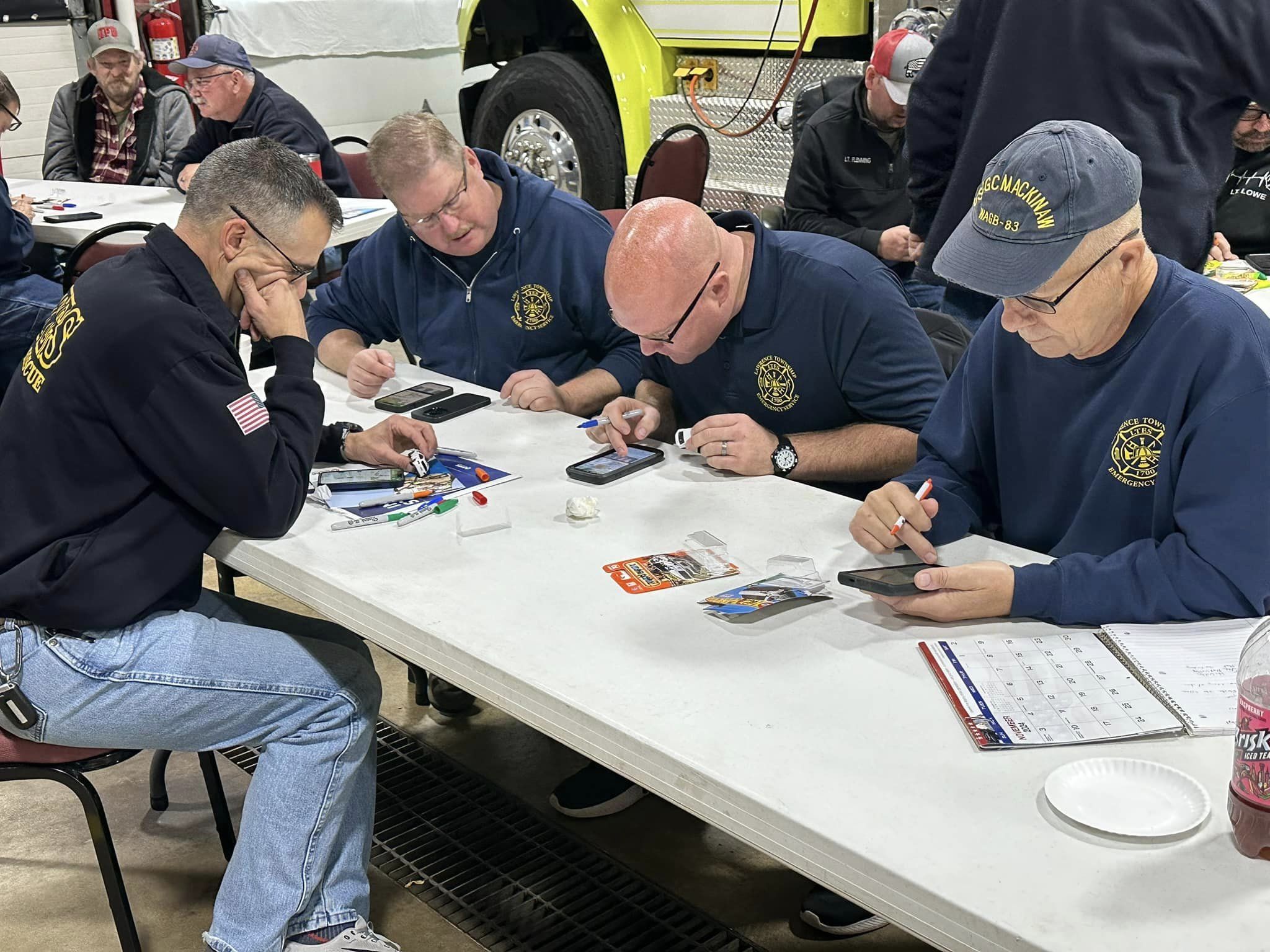

Anthony Gaul
-
Register
- Non-member - Free!
- Member - Free!
- More Information
-
Register
-
Contains 4 Component(s) Includes a Live In-Person Event on 09/13/2025 at 8:00 AM (CDT)
The NVFC will offer its EV/AFV course, EV/AFV Incident Management: Safety and Response Techniques at the Dickson Fire Department.
Free EV/AFV Course!
As the number of electric vehicles on the roadways increases, it is important for first responders to understand how a response involving these types of vehicles is different than those with an internal combustion engine. This awareness and fundamentals course sponsored by General Motors will introduce first responders to hybrid and electric vehicles, share data and resources, and equip first responders with the knowledge and tools to respond more safely when a hybrid or electric vehicle is involved in an incident.
Date and Time
Saturday, September 13, 2025 - 0800 - 1600 CST
Location
Dickson Fire Department
5431 Hwy 199
Ardmore, OK 73401
Course Offering
EV/AFV Incident Management: Safety and Response Techniques
Travel and Logistics
Dallas Fort Worth International Airport (DFW)
Recommended Hotels:
- Hilton Garden Inn Ardmore, 710 Premier Pkwy., Ardmore, OK 73401
- Best Western Plus Ardmore Inn & Suites, 2600 W Broadway St., Ardmore, OK 73401
Training site parking: Free lot
Meals and refreshments: Lunch is on your own
Attire: casual (no gear needed)
Contacts
Local: Chief Clarence Perrman, cperryman@dicksonok.org, (580) 465-8176
NVFC: Amanda Tegtmeyer, amanda@nvfc.org, 202-887-5700-
Register
- Non-member - Free!
- Member - Free!
- More Information
-
Register
-
Contains 4 Component(s) Includes a Live In-Person Event on 09/06/2025 at 8:00 AM (EDT)
The NVFC will offer its EV/AFV course, EV/AFV Incident Management: Safety and Response Techniques at the Everton Volunteer Fire Department.
Free EV/AFV Course!
As the number of electric vehicles on the roadways increases, it is important for first responders to understand how a response involving these types of vehicles is different than those with an internal combustion engine. This awareness and fundamentals course sponsored by General Motors will introduce first responders to hybrid and electric vehicles, share data and resources, and equip first responders with the knowledge and tools to respond more safely when a hybrid or electric vehicle is involved in an incident.
Date and Time
September 6, 2025 - 0800-1600 EST
Location
Everton Volunteer Fire Department
5495 S State Road 1
Connersville, IN 47331
Course Offering
EV/AFV Incident Management: Safety and Response Techniques
Travel and Logistics
Indianapolis International Airport (IND) or Connersville Airport-Mettel Field (CEV)
Recommended Hotel:
- Woodridge Inn, 3700 Western Ave., Connersville, IN 47331
Training site parking: Free lot
Meals and refreshments: Lunch is on your own
Attire: casual (no gear needed)
Contacts
Local: Chief Chad Gronning, fire2124@yahoo.com, (765) 265-1371
NVFC: Amanda Tegtmeyer, amanda@nvfc.org, 202-887-5700-
Register
- Non-member - Free!
- Member - Free!
- More Information
-
Register
-
Contains 4 Component(s) Includes a Live In-Person Event on 08/09/2025 at 8:00 AM (CDT)
The NVFC will offer its EV/AFV course, EV/AFV Incident Management: Safety and Response Techniques at the Lacon Fire Station.
Free EV/AFV Course!
As the number of electric vehicles on the roadways increases, it is important for first responders to understand how a response involving these types of vehicles is different than those with an internal combustion engine. This awareness and fundamentals course sponsored by General Motors will introduce first responders to hybrid and electric vehicles, share data and resources, and equip first responders with the knowledge and tools to respond more safely when a hybrid or electric vehicle is involved in an incident.
Day and Time
Saturday, August 9, 2025 - 0800-1600 CST
Location
Lacon Fire Station
921 5th Street
Lacon, IL 61540
Travel and Logistics
General Wayne A. Downing Peoria International Airport (PIA)
Recommended Hotels:
- Embassy Suites by Hilton, 100 Conference Center Dr., East Peoria, IL 61611
- Econo Lodge, 615 S. 4th St., Chillicothe, IL 61523
Training site parking: Free lot
Meals and refreshments: Lunch is on your own
Attire: casual (no gear needed)
Contacts
Local: Chief Rich Koch, mcema1@yahoo.com, (309) 238-3864
NVFC: Amanda Tegtmeyer, amanda@nvfc.org, 202-887-5700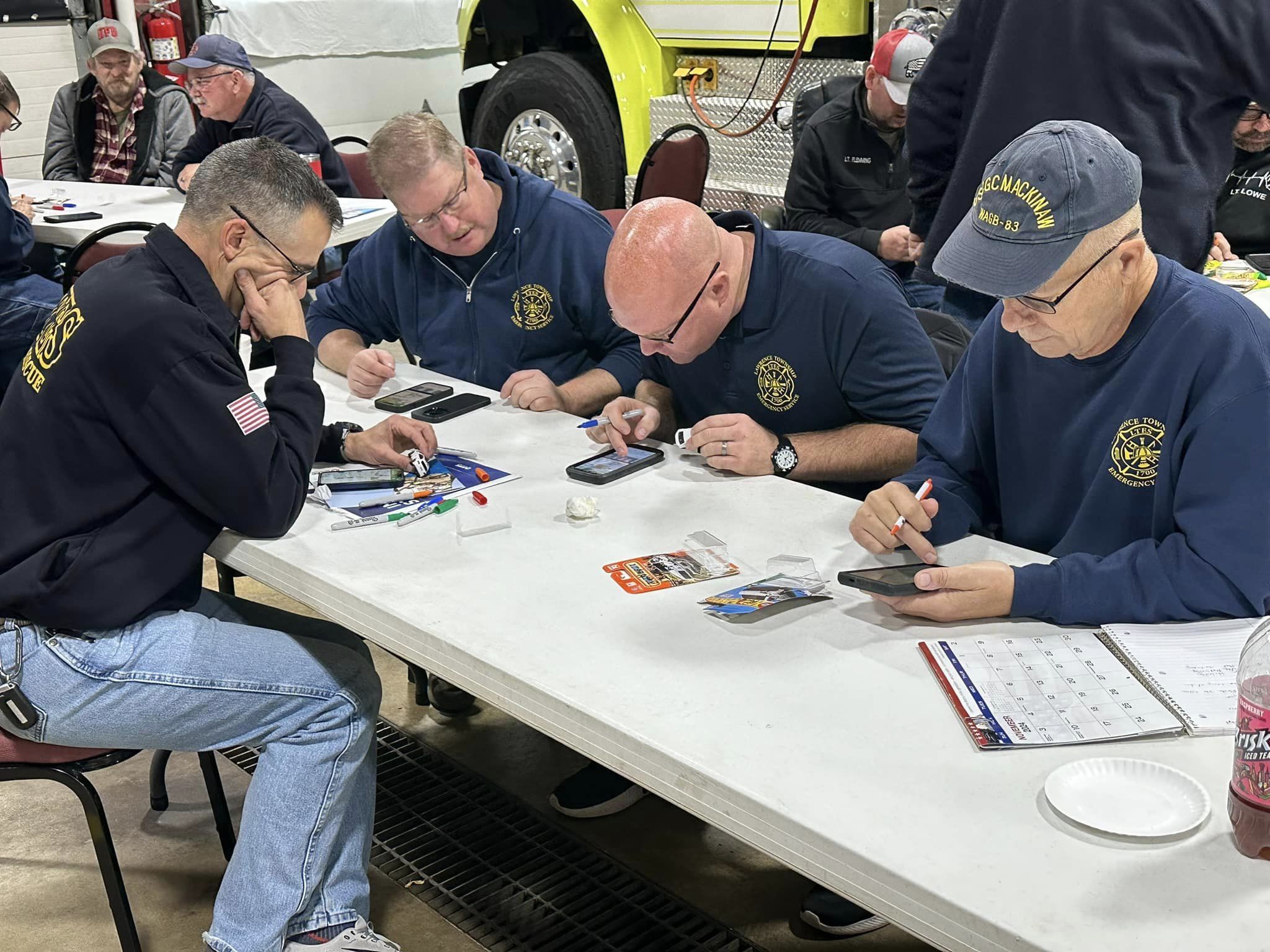
-
Register
- Non-member - Free!
- Member - Free!
- More Information
-
Register
-
Contains 4 Component(s) Includes a Live In-Person Event on 08/02/2025 at 8:00 AM (CDT)
The NVFC will offer its EV/AFV course, EV/AFV Incident Management: Safety and Response Techniques at the Mont Belvieu Fire Station.
Free EV/AFV Course!
As the number of electric vehicles on the roadways increases, it is important for first responders to understand how a response involving these types of vehicles is different than those with an internal combustion engine. This awareness and fundamentals course sponsored by General Motors will introduce first responders to hybrid and electric vehicles, share data and resources, and equip first responders with the knowledge and tools to respond more safely when a hybrid or electric vehicle is involved in an incident.
Day and Time
Saturday, August 2, 2025 - 0800-1600 CT
Location
Mont Belvieu Fire Station
11607 Eagle Drive
Mont Belvieu, TX 77580
Course Offering
EV/AFV Incident Management: Safety and Response Techniques
Travel and Logistics
George Bush Intercontinental Airport (IAH) or William P. Hobby Airport (HOU)
Recommended Hotels:
- Staybridge Suites Houston East, 7626 Garth Rd., Baytown, TX 77521
- Home2Suites by Hilton, 7512 Garth Rd., Baytown, TX 77521
Training site parking: Free lot
Meals and refreshments: Lunch is on your own
Attire: casual (no gear needed)
Contacts
Local: Chief Brent Hahn, bhahn@montbelvieu.net, (281) 576-2213
NVFC: Amanda Tegtmeyer, amanda@nvfc.org, 202-887-5700
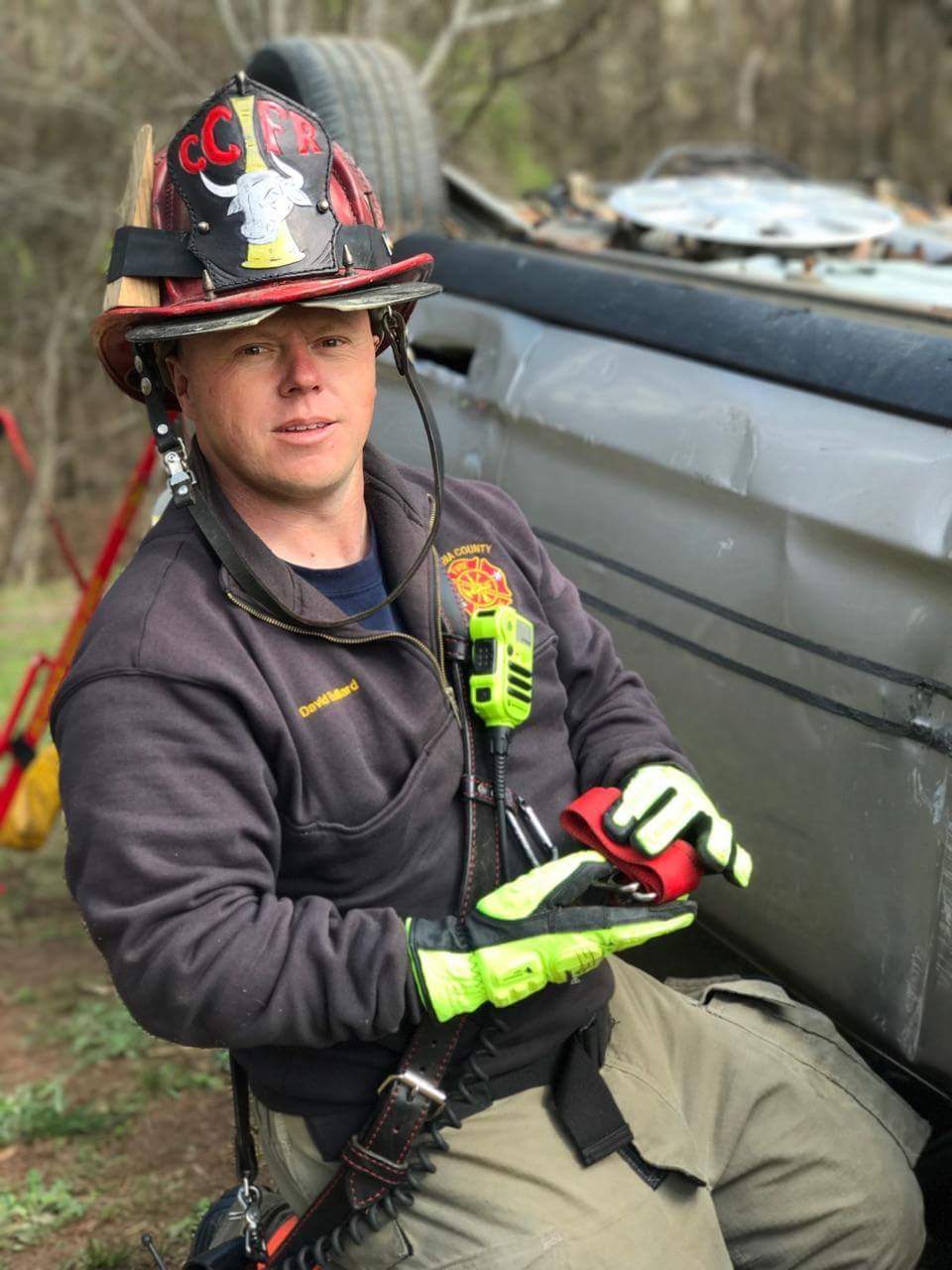
David Bullard
David is a 22 year member of the fire service and currently serves as a Lieutenant and coassigned to the Training Division with the Columbia County Fire Rescue (Ga.) and a part time Firefighter with Grovetown (Ga) DPS. In addition, he serves on the Board of Directors for the Georgia State Firefighter's Association, National Volunteer Fire Council State Director, Georgia Pipeline Emergency Response Initiave Board of Directors, NFPA’s Working Group on Flammable Refrigerants, Alternate to NFPA 1021 and 1056 Committees, and was Secretary of IFSTA's Pumping Apparatus Driver Operator 3rd Edition Curriculum Committee, contributor to the “Training Officer’s Desk Reference”, and is a Safety and Health coordinator with HEPACO LLC. As an active instructor for the Georgia Fire Academy with Firefighter Basics, David is constantly engaged with teaching live fire, leadership, HAZMAT, and Firefighter Survival/RIT classes.
-
Register
- Non-member - Free!
- Member - Free!
- More Information
-
Register
-
Contains 4 Component(s) Includes a Live In-Person Event on 07/24/2025 at 7:00 PM (EDT)
Many fire and EMS departments across the nation are struggling to find new volunteer members and retain their current members. This session discusses the challenges of recruiting volunteers, presents valuable research collected as part of the NVFC’s Make Me A Firefighter campaign, and offers ideas to help overcome recruiting challenges. During the second half of the session, retention challenges, potential solutions, and the importance of leadership will be covered.
Free Essentials of Volunteer Retention and Recruitment course - no experience needed!
Many fire and EMS departments across the nation are struggling to find new volunteer members and retain their current members. This session discusses the challenges of recruiting volunteers, presents valuable research collected as part of the NVFC’s Make Me A Firefighter campaign, and offers ideas to help overcome recruiting challenges. Potential retention solutions and the importance of leadership will also be covered.
Date and Time
Thursday, July 24, 2025, 1900-2030 ET
Location
Woodstock Fire Department
121 W Court Street
Woodstock, VA 22664
Course Offering
Essentials of Volunteer Retention and Recruitment
Travel and Logistics
Closest airport: Dulles International Airport (IAD)
Recommended Hotels:
- Hampton Inn and Suites, 1150 Motel Drive, Woodstock, VA 22664
- Holiday Inn Express, 1130 Motel Drive, Woodstock, VA 22664
Training site parking: Free lot
Attire: casual (no gear needed)
Contacts
Local: Zachary Hottel, zachhottel@gmail.com
NVFC: Amanda Tegtmeyer, amanda@nvfc.org, 202-887-5700
Dave Lewis
David Lewis is an active member of the Odenton Volunteer Fire Company (Anne Arundel County, Maryland), having served for over 50 years as a volunteer firefighter/EMT, Past President, and past Chief Officer. David is a Past President of the Anne Arundel County Volunteer Firefighters Association and of the Maryland State Firemen’s Association. He currently serves as the President the Cumberland Valley Volunteer Firefighters Association and as Maryland Director to the National Volunteer Fire Council. David’s true passion is in training and education. He is active as an instructor with the Maryland Fire and Rescue Institute and the National Fire Academy. He is also active with delivering training programs for the NVFC, traveling across the U.S. to enhance the training and education of emergency services personnel.
-
Register
- Non-member - Free!
- Member - Free!
- More Information
-
Register
-
Contains 4 Component(s) Includes a Live In-Person Event on 07/19/2025 at 8:00 AM (EDT)
The NVFC will offer its EV/AFV course, EV/AFV Incident Management: Safety and Response Techniques at the McLaren Bay Region Lincoln Center in Bay City, MI
Free EV/AFV Course!
As the number of electric vehicles on the roadways increases, it is important for first responders to understand how a response involving these types of vehicles is different than those with an internal combustion engine. This awareness and fundamentals course sponsored by General Motors will introduce first responders to hybrid and electric vehicles, share data and resources, and equip first responders with the knowledge and tools to respond more safely when a hybrid or electric vehicle is involved in an incident.
Date and Time
Saturday, July 19, 2025 - 0800-1600 EST
Location
McLaren Bay Region Lincoln Center
820 S Lincoln St
Bay City, MI 48708
Course Offering
EV/AFV Incident Management: Safety and Response Techniques
Travel and Logistics
MBS International Airport (MBS)
Recommended Hotels:
- DoubleTree by Hilton, One Wenonah Park Place, Bay City, MI 48708
- Courtyard Bay City, 2 E Main Street, Bay City, MI 48708
Training site parking: Free lot
Meals and refreshments: Lunch is on your own
Attire: casual (no gear needed)
Contacts
Local: Chief Bryan Kukla, firedept@frankenlust.com, (989) 751-3889
NVFC: Amanda Tegtmeyer, amanda@nvfc.org, 202-887-5700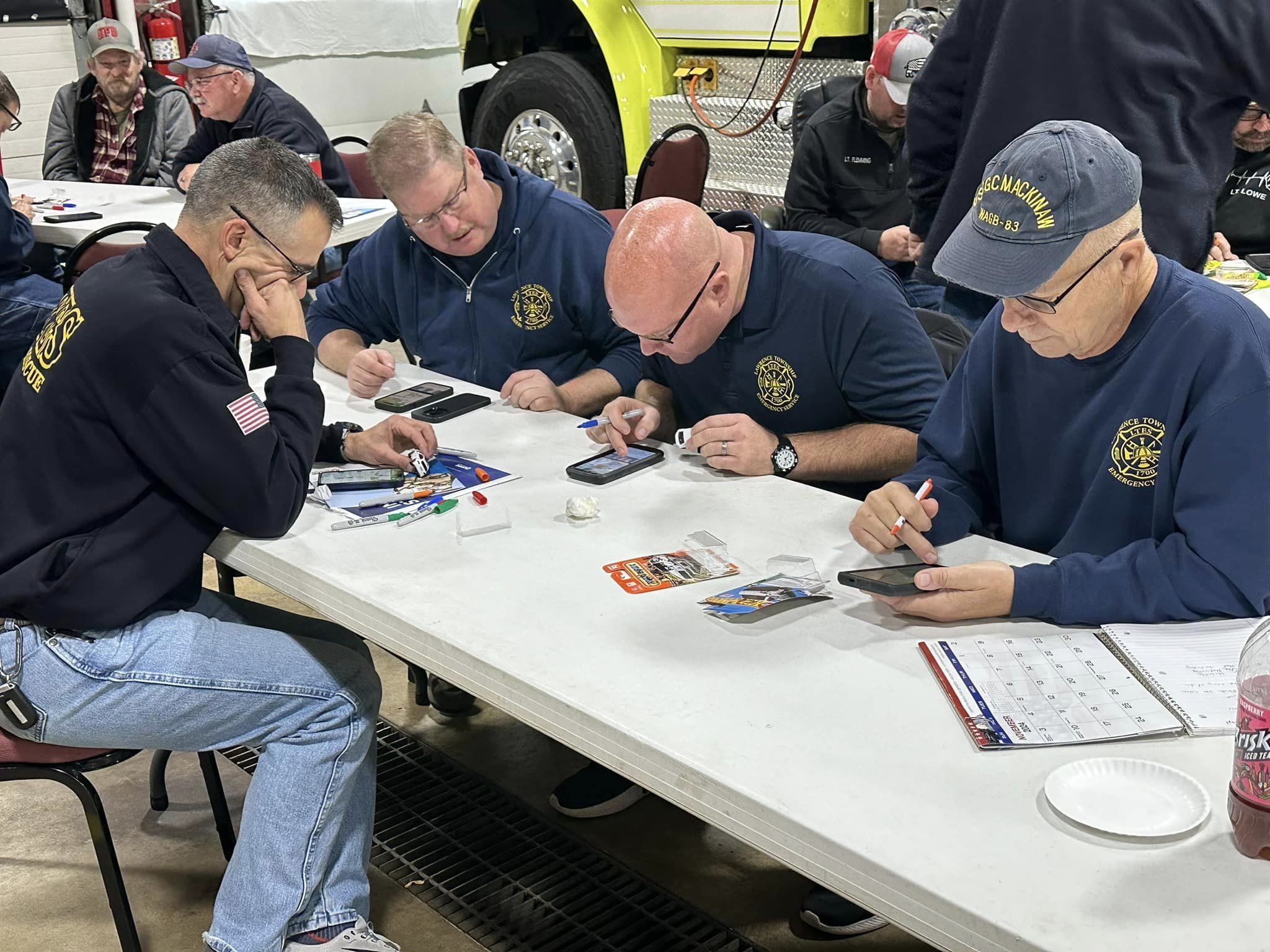
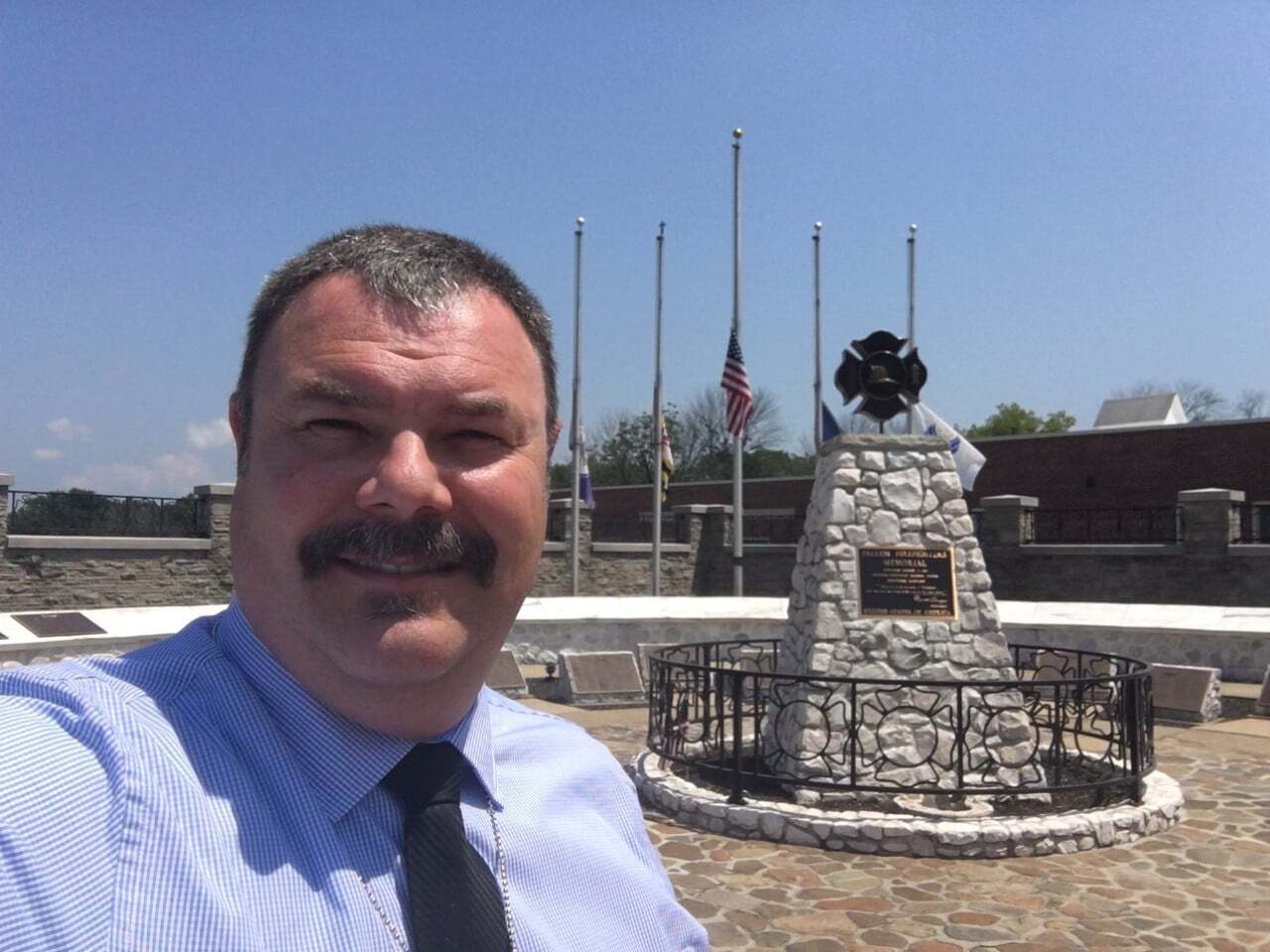
Doug deBest
Doug deBest has been involved in the fire service for over twenty-nine years, with the majority of his time spent in volunteer roles within volunteer or combination departments. He has served in many different compacities within the fire service; from volunteer & career roles on municipal departments, part-time on a private fire department, and even as an industrial fire brigade member. Doug served on the Baroda Fire Department for fifteen years, rising from the role of firefighter to the rank of Fire Chief. Currently, Doug serves as a Lieutenant and the Training Officer for the St. Joseph Township Fire Department – Station # 1.
Doug has earned a Bachelor Degree in Fire Science from Lake Superior State University, and a Master Degree from Western Michigan University. He recently completed a Graduate Certificate in Emergency Management & Disaster Resilience from Eastern Kentucky University. Doug was awarded an “Alumni Fellow” from Lake Superior State University for his contributions to the Life of the University in 2005; he is the recipient of the only Alumni Fellow to be awarded to a Fire Science graduate.
Doug has attended hundreds of hours of training related to the areas of fire fighting, emergency medical services, technical rescue, and emergency management. Doug holds numerous certifications from the Office of Fire Fighter Training (OFFT) in Michigan; including Fire Fighter II, Fire Officer III and Instructor II. He is also a licensed Emergency Medical Technician and an Emergency Medical Services – Instructor / Coordinator. Doug has maintained his certification as a Professional Emergency Manager from the Michigan State Police, since 2001. Doug is also a license Drinking Water System Operator, at the S-3 level with the State of Michigan.
In early 2022, Doug was credentialed as a Chief Training Officer by the Center for Public Safety Excellence; for his achievements and hard work in the area of fire training and instruction. This was the second time that Doug was recognized for his achievements and efforts in fire service leadership, as he received the designation as a Fire Officer by the Center for Public Safety Excellence; in December of 2012.
-
Register
- Non-member - Free!
- Member - Free!
- More Information
-
Register









